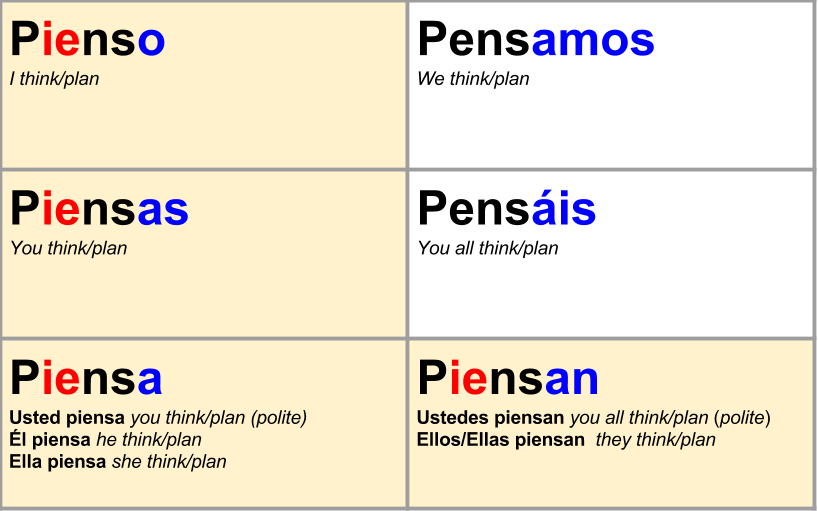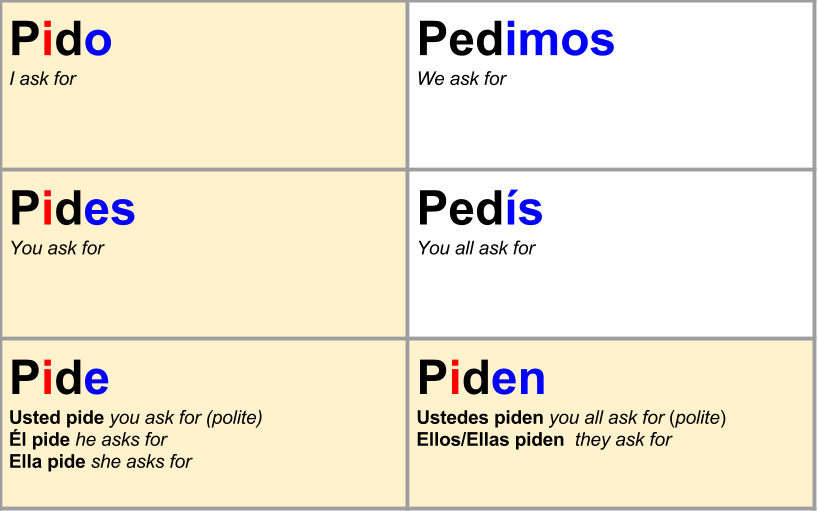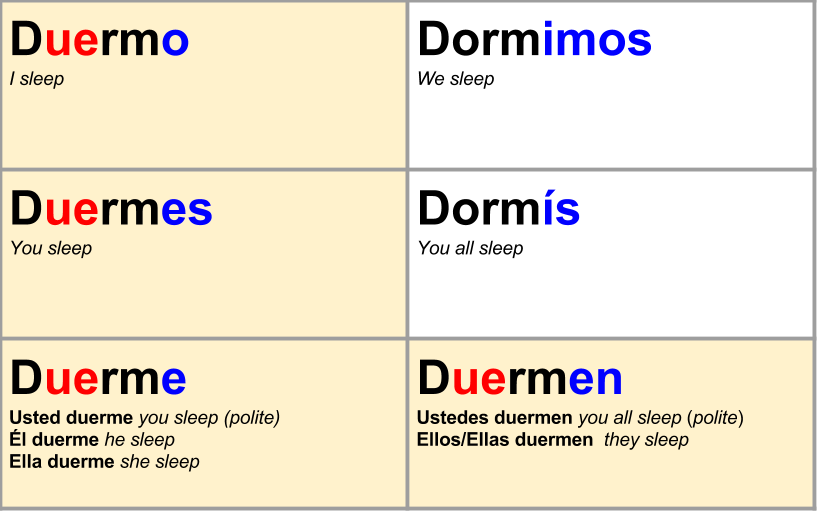Stem Changers
How to form the Present tense of Stem-changers
Stem-Changers have regular verb endings, the only difference is that the "stem" or "root" of the verb is going to have a small change. There are three types of "stem-changing" verbs: e → ie e→i o→ue
Students will know if a verb is a stem-changer because in the dictionary it will indicate if it is by having the stem change in parenthesis: i.e. pedir (i); pensar (ie); poder (ue).
The letter that will always get the stem-change will be the second vowel from the ending.
Stem-Changers have regular verb endings, the only difference is that the "stem" or "root" of the verb is going to have a small change. There are three types of "stem-changing" verbs: e → ie e→i o→ue
Students will know if a verb is a stem-changer because in the dictionary it will indicate if it is by having the stem change in parenthesis: i.e. pedir (i); pensar (ie); poder (ue).
The letter that will always get the stem-change will be the second vowel from the ending.
pedir (i) pensar (ie) poder (ue) comenzar (ie) preferir (ie)
Not every form of the verb will be stem-changed, it is only the 1st Person Singular (Yo), 2nd Person Singular (Tú), and the 3rd Person Singular & Plural (Él, Ella, Usted, Ellos, Ellas, Ustedes). Many call it the "Boot" because of where it lies on the verb chart the the image it makes.
Question: How do you know if a verb is an E-IE or an E-I stem changer? They both have an E in the stem, so which one do you use? How do you know?
Trick that works ninety-something percent of the time: -AR and -ER verbs tend to be E→IE. -IR verbs tend to be E-I. There are two verbs that will break this pattern: VENIR (IE) PREFERIR (IE)
Also keep in mind that there are some verbs that are not only Stem-Changers, but also have Irregular YO forms: TENER (yo tengo) VENIR (yo vengo) DECIR (digo)
JUGAR is unique because it also is a stem changer, but it is a U→UE
Question: How do you know if a verb is an E-IE or an E-I stem changer? They both have an E in the stem, so which one do you use? How do you know?
Trick that works ninety-something percent of the time: -AR and -ER verbs tend to be E→IE. -IR verbs tend to be E-I. There are two verbs that will break this pattern: VENIR (IE) PREFERIR (IE)
Also keep in mind that there are some verbs that are not only Stem-Changers, but also have Irregular YO forms: TENER (yo tengo) VENIR (yo vengo) DECIR (digo)
JUGAR is unique because it also is a stem changer, but it is a U→UE
25 Common Stem-changing Verbs Flashcards
At the bottom you have the option to choose how you want to study the vocabulary (Choose a Study Mode).
At the bottom you have the option to choose how you want to study the vocabulary (Choose a Study Mode).
This set below will help you learn the conjugations as well as the translations.
Below is the website for StudySpanish.com that will allow you to practice verb conjugations and give you feedback on your performance. It is recommended to do at least 10 questions to get a good feel for how well you understand the stem-changers concept. You will see on the right there options to practice the other types of stem-changers.



